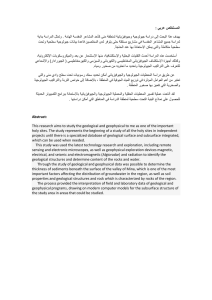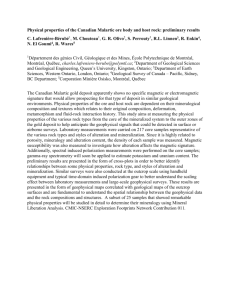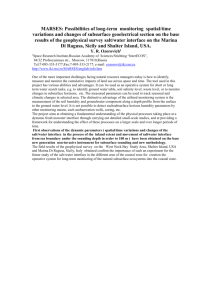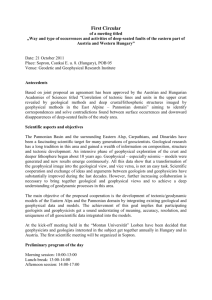analysis of the yatta-canal intake valley along thika river in kenya for
advertisement
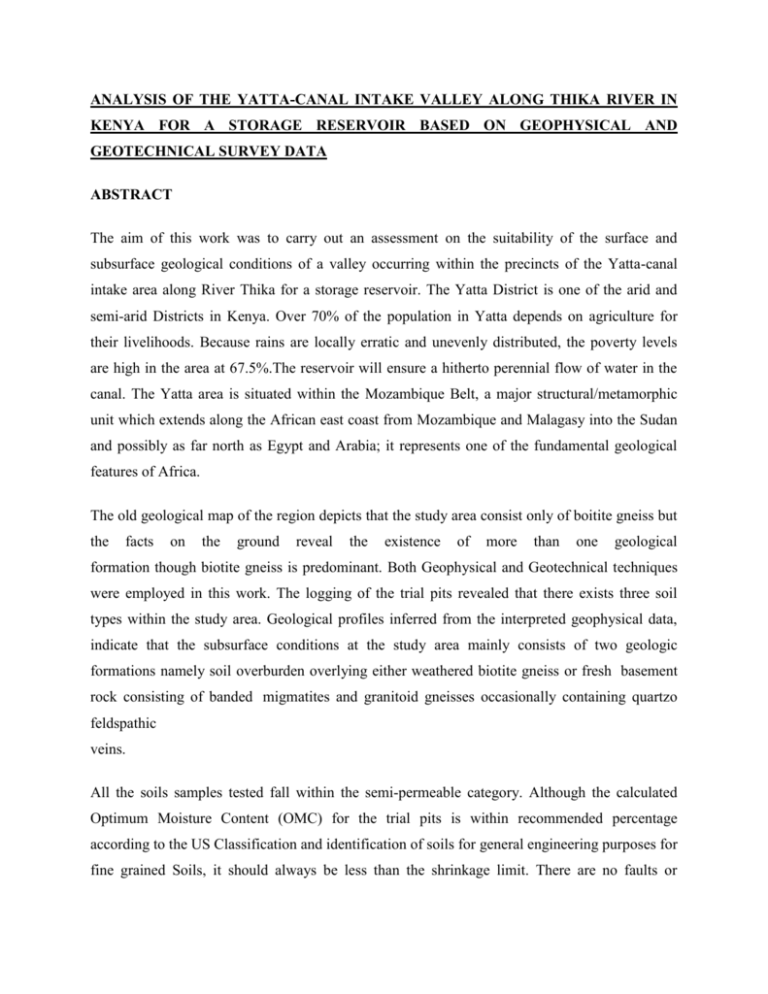
ANALYSIS OF THE YATTA-CANAL INTAKE VALLEY ALONG THIKA RIVER IN KENYA FOR A STORAGE RESERVOIR BASED ON GEOPHYSICAL AND GEOTECHNICAL SURVEY DATA ABSTRACT The aim of this work was to carry out an assessment on the suitability of the surface and subsurface geological conditions of a valley occurring within the precincts of the Yatta-canal intake area along River Thika for a storage reservoir. The Yatta District is one of the arid and semi-arid Districts in Kenya. Over 70% of the population in Yatta depends on agriculture for their livelihoods. Because rains are locally erratic and unevenly distributed, the poverty levels are high in the area at 67.5%.The reservoir will ensure a hitherto perennial flow of water in the canal. The Yatta area is situated within the Mozambique Belt, a major structural/metamorphic unit which extends along the African east coast from Mozambique and Malagasy into the Sudan and possibly as far north as Egypt and Arabia; it represents one of the fundamental geological features of Africa. The old geological map of the region depicts that the study area consist only of boitite gneiss but the facts on the ground reveal the existence of more than one geological formation though biotite gneiss is predominant. Both Geophysical and Geotechnical techniques were employed in this work. The logging of the trial pits revealed that there exists three soil types within the study area. Geological profiles inferred from the interpreted geophysical data, indicate that the subsurface conditions at the study area mainly consists of two geologic formations namely soil overburden overlying either weathered biotite gneiss or fresh basement rock consisting of banded migmatites and granitoid gneisses occasionally containing quartzo feldspathic veins. All the soils samples tested fall within the semi-permeable category. Although the calculated Optimum Moisture Content (OMC) for the trial pits is within recommended percentage according to the US Classification and identification of soils for general engineering purposes for fine grained Soils, it should always be less than the shrinkage limit. There are no faults or significant fractures observed at the area near HEP 1, which is recommended for the dam axis area. Subject to confirmation of the subsurface foundation conditions by core drilling and testing of the bedrock geotechnical characteristics, geophysical and geotechnical investigations done imply that the study area is feasible for dam site and is founded on a sound rock foundation. The valley has an approximate water holding capacity of 24 million cubic litres.

